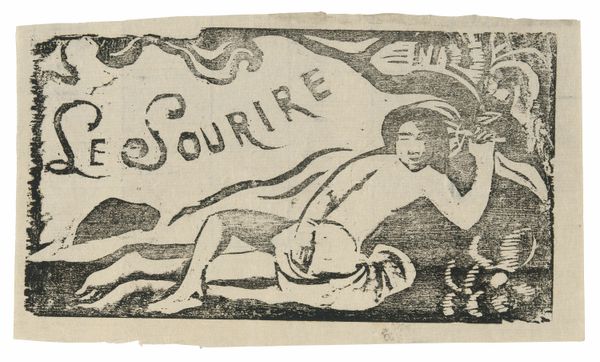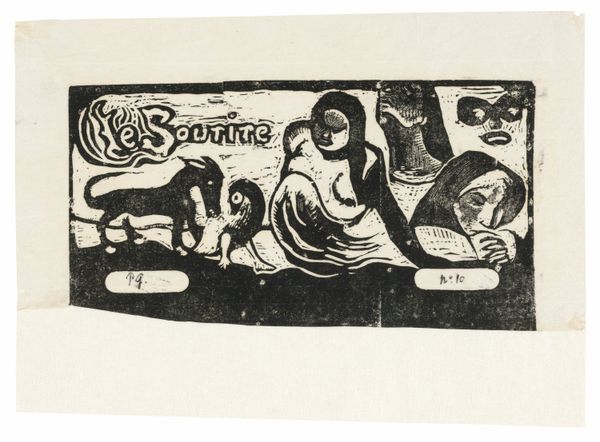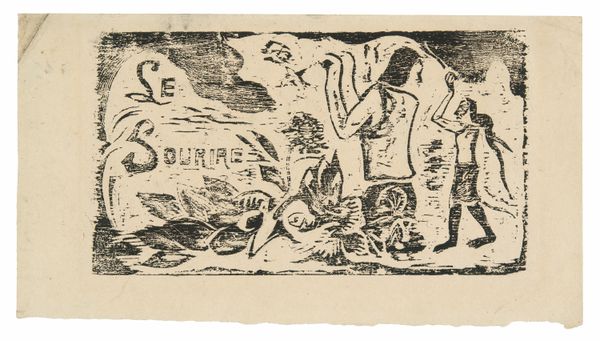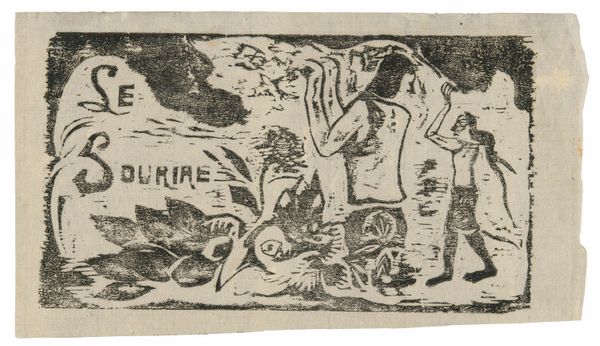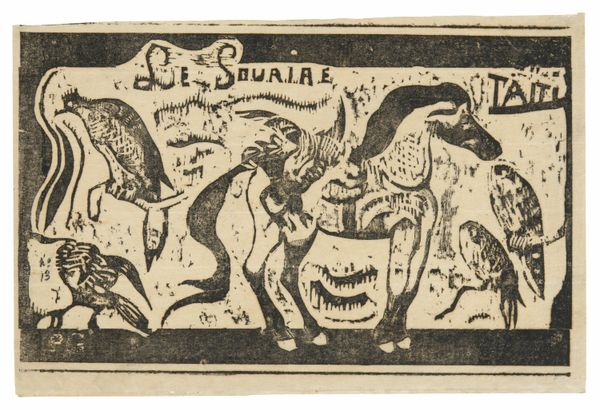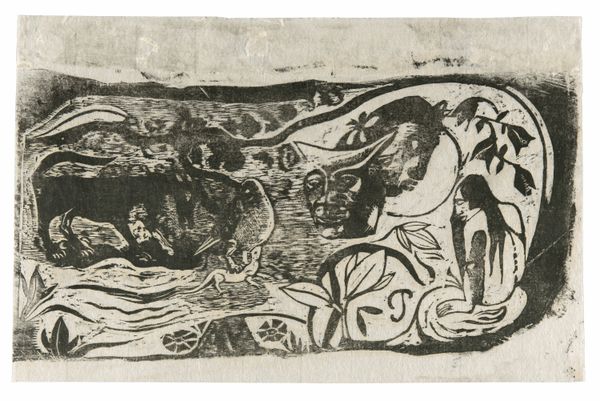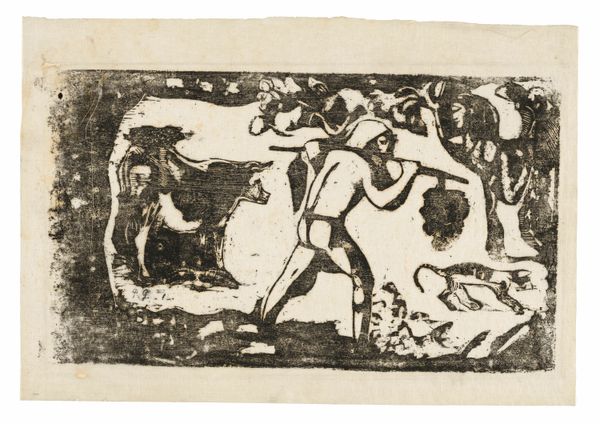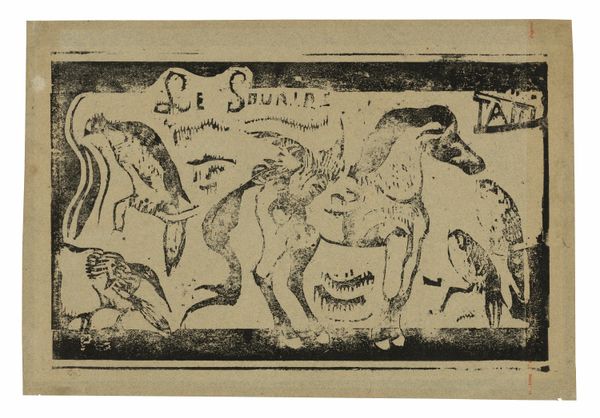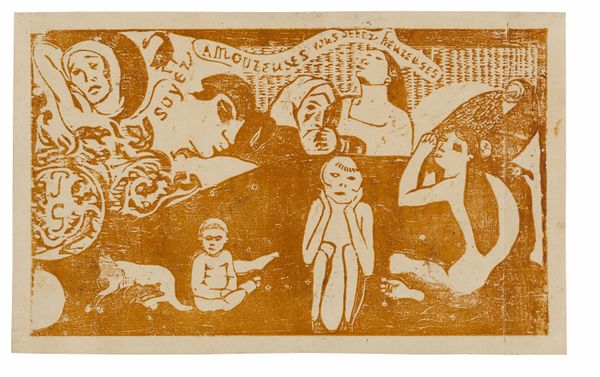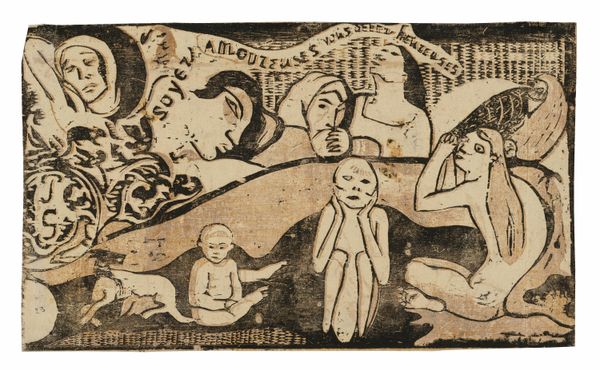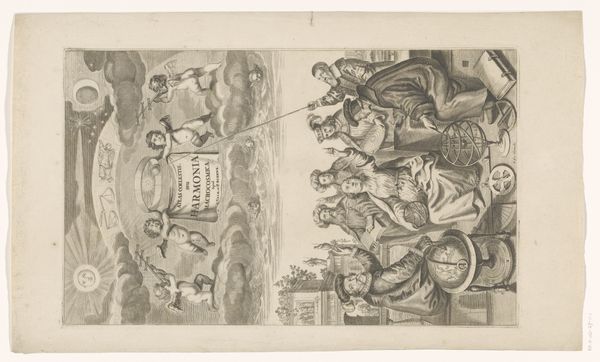
Fox, Busts of Two Women, and a Rabbit, headpiece for Le sourire 1899 - 1900
0:00
0:00
drawing, graphic-art, print, paper, woodcut
#
drawing
#
graphic-art
# print
#
paper
#
woodcut
#
symbolism
#
post-impressionism
Dimensions: 103 × 186 mm (image); 123 × 228 mm (ma×.) (sheet); 142 × 333 mm (secondary support)
Copyright: Public Domain
Curator: Gauguin’s woodcut, created around 1899-1900, features a fox, two women, and a rabbit. The piece acts as a headpiece for his publication "Le Sourire" and resides here at The Art Institute of Chicago. What are your initial thoughts? Editor: My immediate reaction is to its graphic strength! The stark contrast, the dynamic line work, and compressed composition are all quite arresting. It really forces your eye to travel. Curator: Absolutely. Notice how the woodcut medium contributes to the overall visual language? The intentional gouges and varying depths create textures that speak volumes beyond mere representation. Semiotically, these lines embody both precision and primal rawness, don't you think? Editor: Indeed! The roughness feels incredibly appropriate for a work brimming with such potent symbolism. We see the animal figures. The fox often signifies cunning. What’s intriguing is its relationship to the figures, which feel so earthy and present. The title translates to "The Smile". Do you think there is a hidden message? Curator: Good eye, let’s look closer at these juxtapositions. "Le Sourire" or "The Smile", feels rather sardonic. If you note the flattened perspectives reminiscent of Japanese prints, this actually adds to its communicative power, distilling form and allowing these iconic representations to act freely from illusionistic constraint. Editor: So true! It is as though the combination offers both reverence and critique towards his subjects? I appreciate the open dialogue that this print sparks concerning identity and colonial interactions within Gauguin's broader oeuvre. Curator: Well observed! Editor: Considering its formal boldness coupled with its challenging imagery, I find the woodcut lingers long after one looks away. It certainly makes you ponder its various angles, which I quite enjoy. Curator: And I believe it is precisely that sustained reflection that cements the piece within both its stylistic framework and its narrative function. Its lasting impact cannot be denied!
Comments
No comments
Be the first to comment and join the conversation on the ultimate creative platform.
